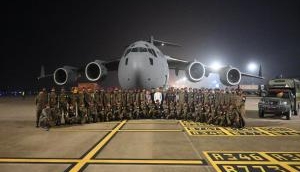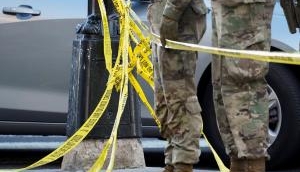
Today, on 6 August, the world is ruminating about perhaps the most tragic incident in history -- the Hiroshima nuke bombing. In 1945, on this same day, United States of America dropped a nuclear bomb on Hiroshima, Japan in which more than 1,40,000 people lost their lives.
The total population of Hiroshima at that time was 3,50,000, of which half was completely washed out. Those who survived had to battle with life threatening effects of nuclear radiation for decades to come.
Just after three days of bombing Hiroshima, US bombed another Japanese city, Nagasaki on 9 August, 1945. More than 74,000 people perished in this attack. The first atomic bomb dropped on Hiroshima was named 'little boy' and the second was named 'fat man'.
Years after the bombings, thousands of people died of radiation sickness, kids were born with physical and genetic deformities and even today, both the cities have not been able to completely come out of the event which almost destroyed them completely.
What exactly happened?
An American B-29 bomber named the Enola Gay left the island of Tinian for Hiroshima, Japan on 6 August 1945. 'Little boy', the uranium 235 gun-type bomb exploded Hiroshima and immediately the whole city was covered with thick smoke and flames. The impact was so strong that windows of the houses which were located at a distance of more than 35 miles, shattered in an instant.
It is said that after the co-pilot, Captain Robert Lewis saw this, he commented " My God, what have we done?"
Just a week after the attack, on 15 August 1945, Japan surrendered unconditionally to its allies in World War II. Japan's Emperor Hirohito gave a radio address and announced how devastating was the impact of a 'new and most cruel bomb.' The formal agreement of surrender was signed on 2 September.
What was the impact?
In an interview given to Russia Today, survivors of the attack shared their grief and what they had experienced on the day.
"There were corpses all over the place and when a mother would walk looking for her kids she sometimes would hear cries calling 'mom.mom.' But even if they look at their children's faces they couldn`t recognise them. It was the children who recognised their mothers," said Chiyoko Kupwara, who was 13-year-old when the incident took place.
Another survivor Sumiteru Taniguchi remembered painfully, "My back was completely burned to the bones. And parts of my body hardened and the ribs got into my heart and lungs. It is very painful still today."
Sanae Ikeda, who is now 82 shared how the explosion took away the skin of his hand and it started bleeding and that he was not able to see anything except the green light created by explosion.
70 years after the attack, where do we stand?
The examples of Hiroshima and Nagasaki are sufficient for the world to understand that nuclear bombs need to be destroyed for safeguarding the human race. After the bombings in 1945, while US was jubilant about the victory on Japan, the 'Vatican' was deeply pained at the fact that American victory came at the cost of destruction of humanity.
Studies show that 46 per cent of leukemia deaths and 11 per cent of solid cancer deaths from 1950-2000, in bomb survivors of Japan were due to the radiation from the bombs.
The United Nations Office for Disarmament Affairs (UNODA) asserts that UN is committed to eliminate such weapons ever since its establishment, as these weapons are a threat to humanity. In 1946, a commission was set up to ensure control of atomic energy in a way that it was only used for peaceful purposes. Similarly, several other steps have been by United Nations to curb the menace of growing Atomic energy accumulation by the countries.
However, the threat of nuclear weapons only seems to be growing with passing time. After World War II, dozens of other countries have entered the league of nations which possesses atomic bombs, including India and Pakistan.
The intensity of bombs used in 1945 was 15 Kiloton and 21 Kiloton and today US possesses a 455 Kiloton Submarine Launched Ballistic Missile 'Trident' and its rival Russia has a 800 Kiloton Intercontinental Ballisitc Missile 'SS'. Therefore, the growing intensity of danger from these weapons can be imagined.
On this 70th anniversary of Hiroshima bombing, the world needs to contemplate upon methods to curb this growing menace which might become the reason of large scale destruction in the future.








![BJP's Kapil Mishra recreates Shankar Mahadevan’s ‘Breathless’ song to highlight Delhi pollution [WATCH] BJP's Kapil Mishra recreates Shankar Mahadevan’s ‘Breathless’ song to highlight Delhi pollution [WATCH]](https://images.catchnews.com/upload/2022/11/03/kapil-mishra_240884_300x172.png)

![Anupam Kher shares pictures of his toned body on 67th birthday [MUST SEE] Anupam Kher shares pictures of his toned body on 67th birthday [MUST SEE]](https://images.catchnews.com/upload/2022/03/07/Anupam_kher_231145_300x172.jpg)






